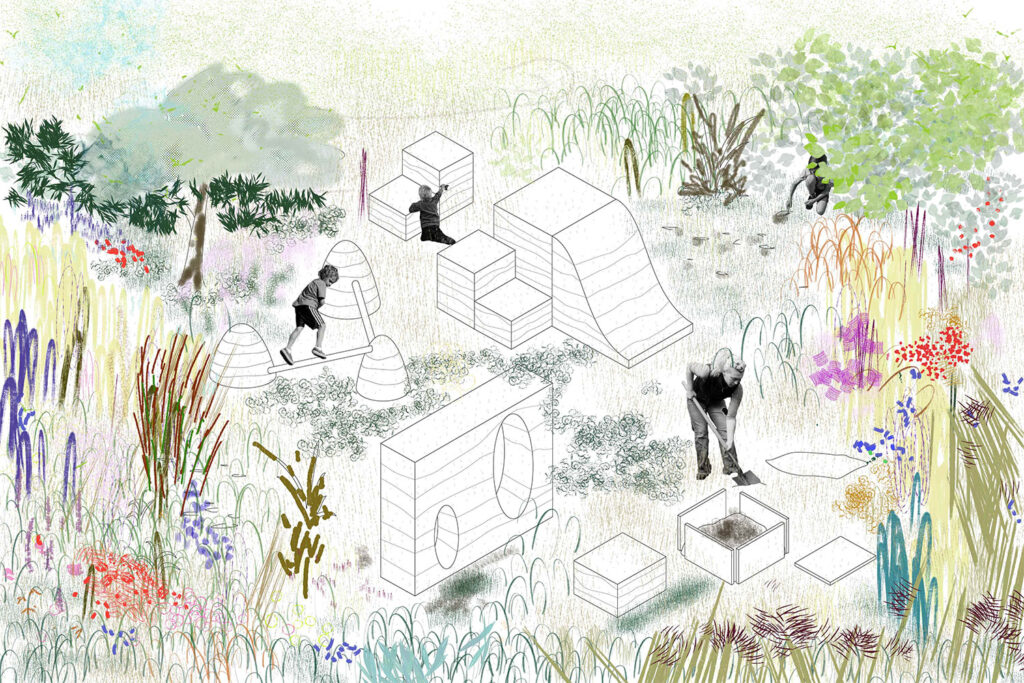
Dirty Playground positions play as a multispecies activity that unravels over time positioning probiotic design for public space. It suggests using ecological succession as a framework for multi-generational use. Through the process of ecological succession the playground’s soil microbiome over time resembles the richness and biodiversity of a mature forest.
The project follows four key phases: The first is a process of remediation in the form of a swamp park; using oxygen rich groundwater to increase surface area for bacteria to digest contaminants. Second, the transplanting of an ecologically rich soil sample from existing forest to the remediated soil. Third, a messy meadow, a layer of perennial flowers which makes way for a young forest. The last phase is a healthy robust forest which offers health benefits to the people that come to play, and enriches and strengthens our urban soil microbiomes.
At each stage, the process of succession is coupled with elements of play in the form of rammed earth structures. The communities that directly benefit from the area have an active role in the entire process. This in turn enables processes of microbial exchange across species, strengthening our collective microbiomes.
Dirty Playground signals a shift in which longer natural processes such as succession need to be addressed as a crucial element of urban design. Globally biodiversity is in decline, with more people moving into urban centres. The need to make our urban spaces ecologically diverse is precinct now more than ever.
(Together with Serina Tarkhanian and Coletrane McDowell. Winner of BDC – Best presentation award)

